Pashkov House
Pashkov House is one of the most famous classicist buildings in Moscow, now belonging to the Russian State Library. The depths of Vagankovsky Hill beneath the Pashkov House are considered one of several possible locations for the legendary Library of Ivan the Terrible. The Pashkov House is described in the novel The Master and Margarita as the meeting place of Woland, Azazello and Levi Matvey.
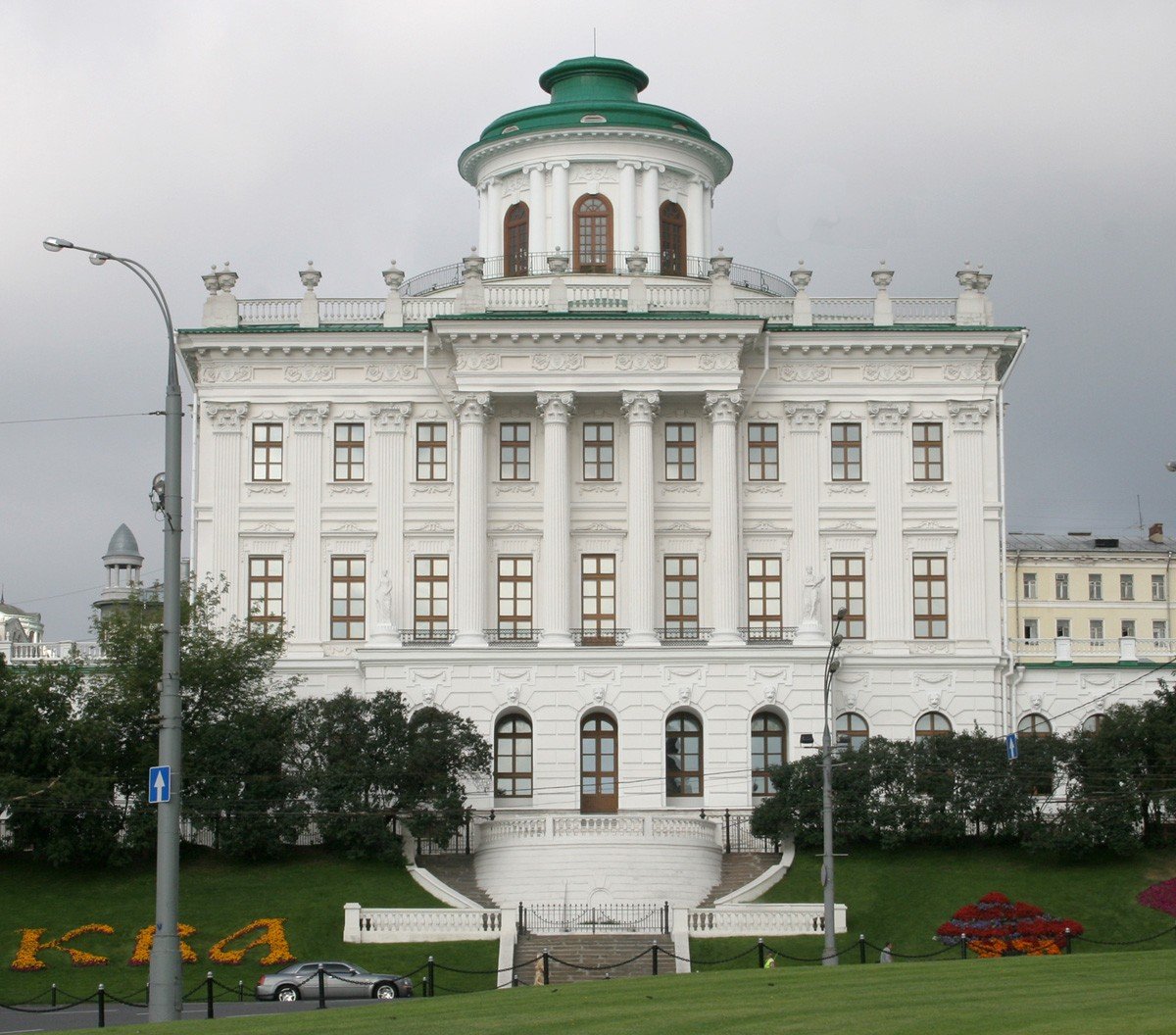
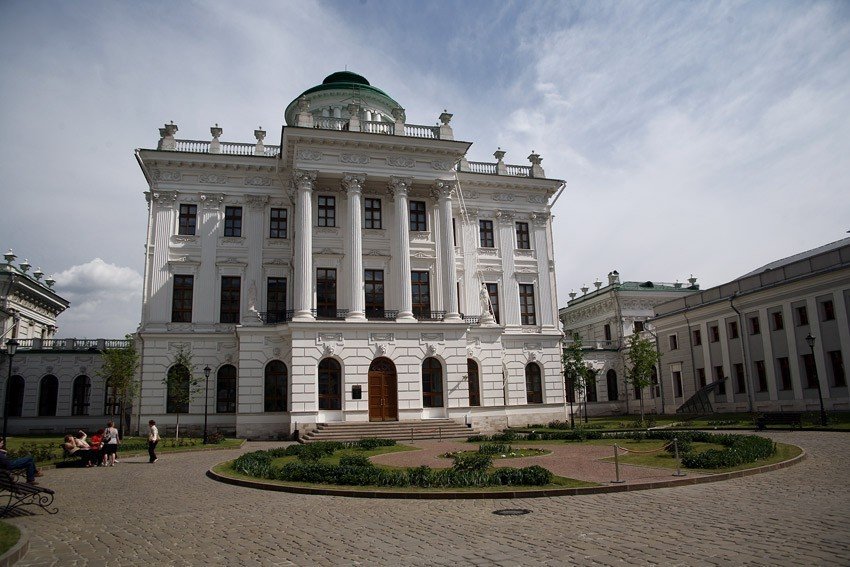
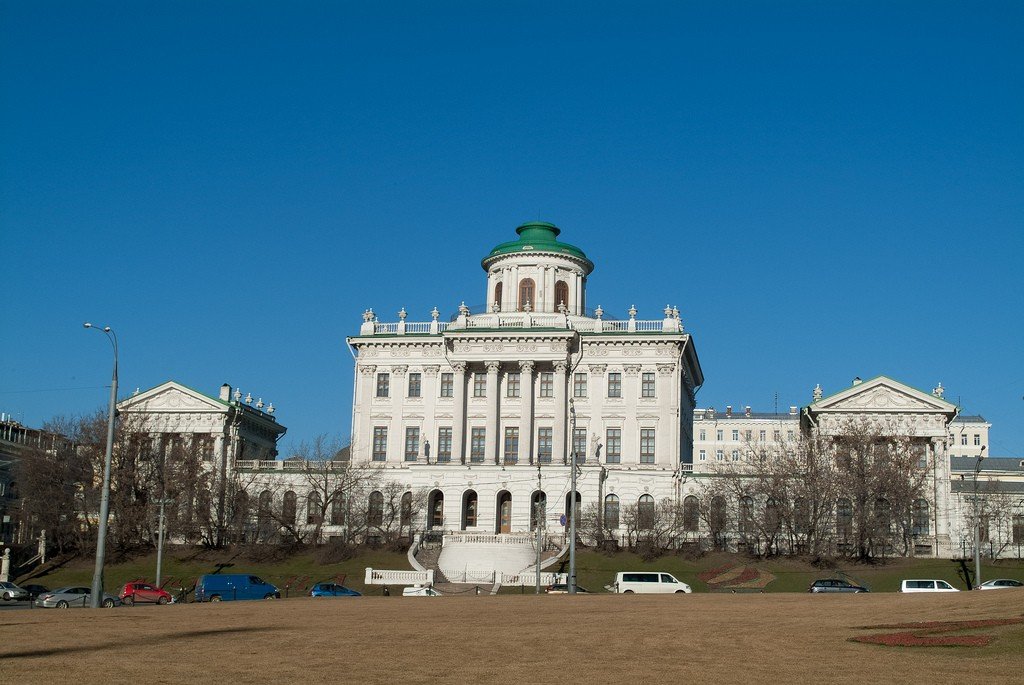
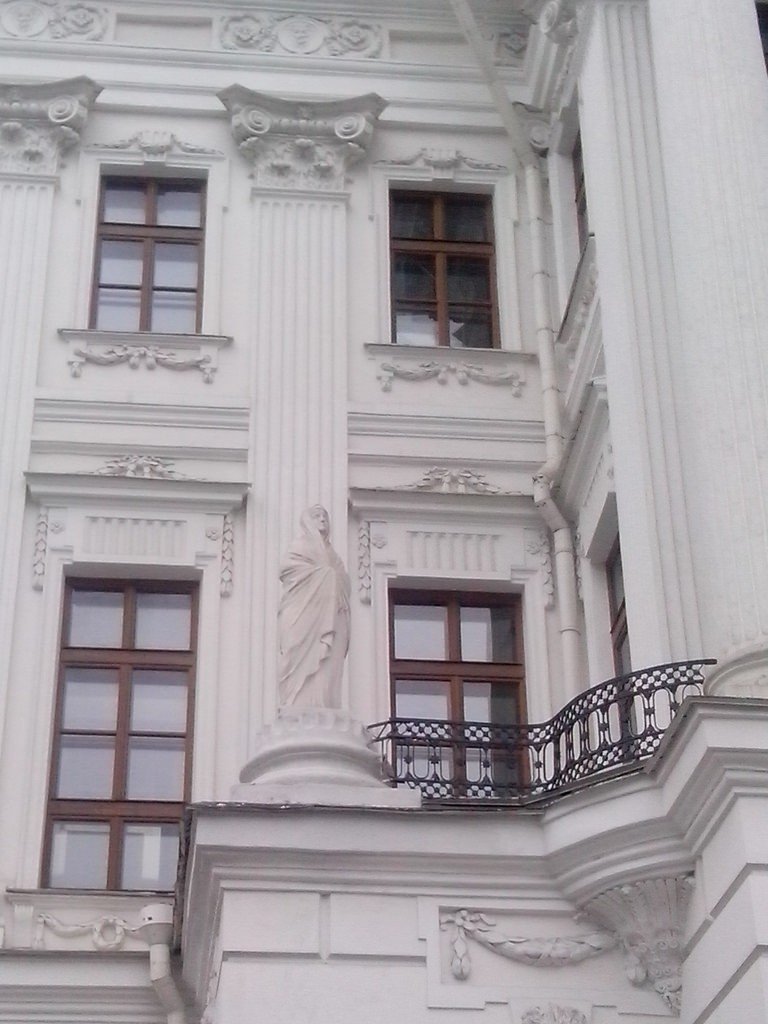
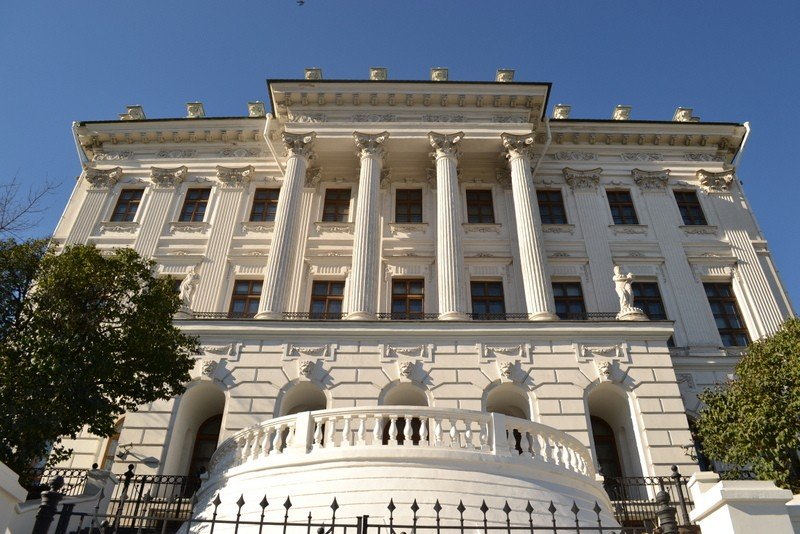
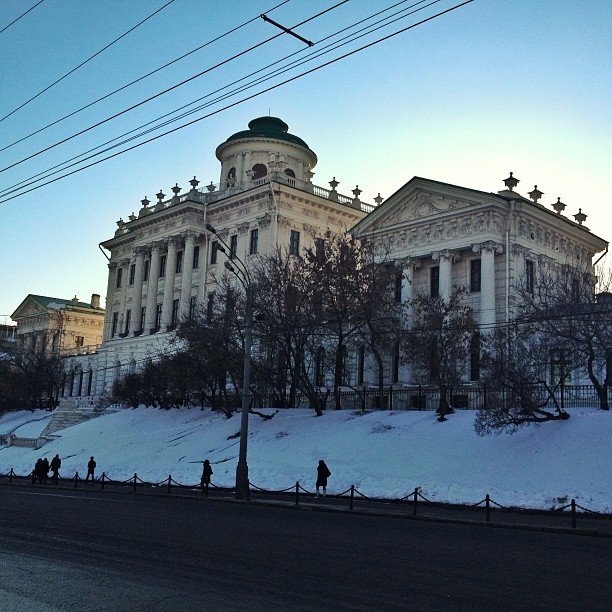
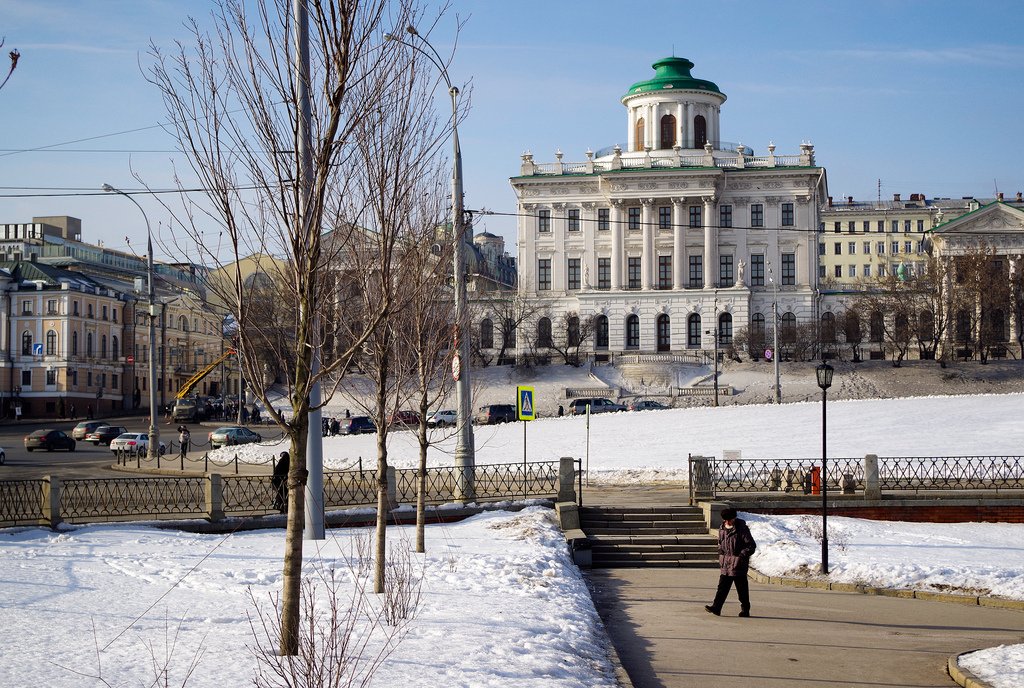
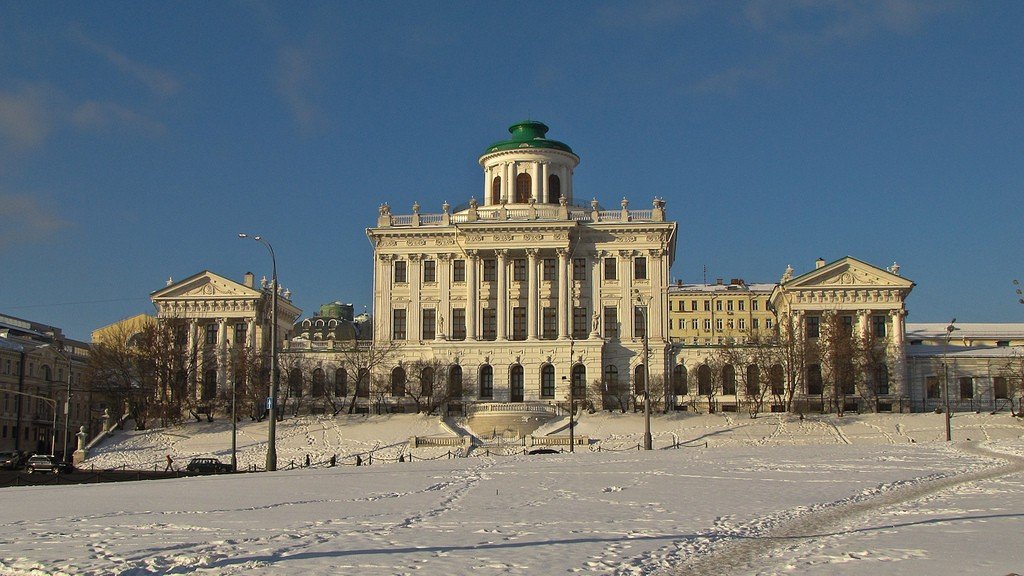
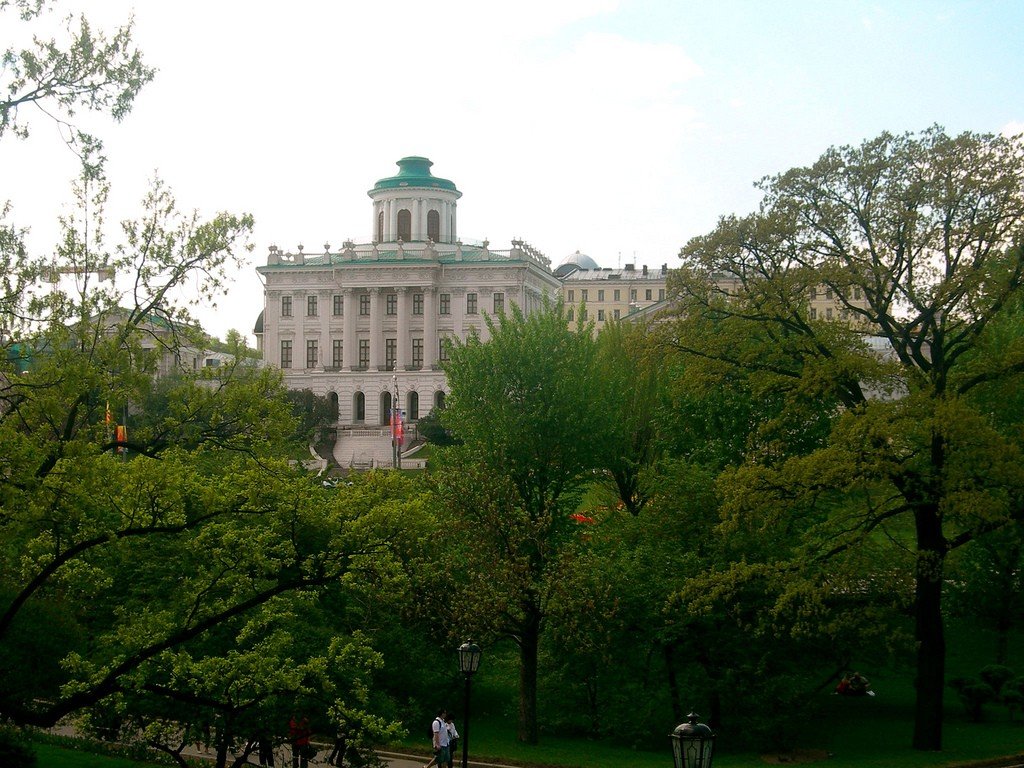
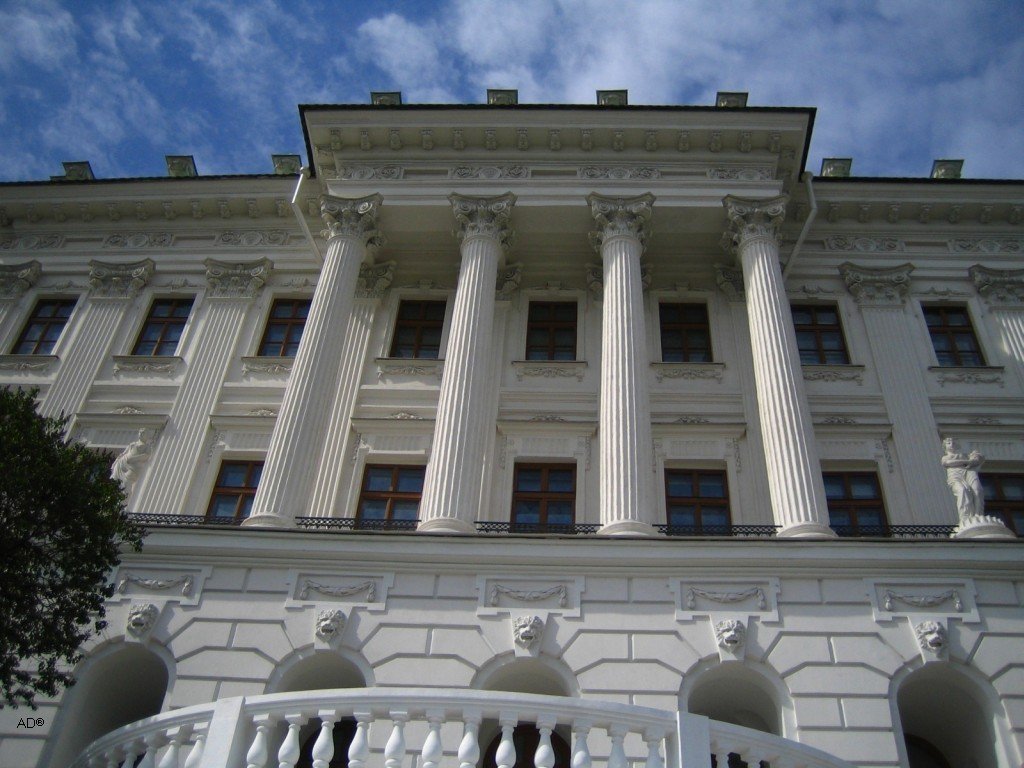
General Information
Built in just two years – from 1784 to 1786, the Pashkov House is not only a brilliant example of Russian architecture, but also a significant architectural monument of its era.
.The Pashkov House opens a magnificent panorama of Mokhovaya Street from Borovitskaya Square. The bright white building, raised on a high plinth, is built according to the classical three-part principle: the central building with a belvedere and portico is united by one-storey galleries with side wings. The integrity of the structure is emphasized by a single plot of decoration, which is equally saturated with all volumes of the composition of the main house.
.
Practically until the very end of the XVIII century, the estate on Vagankovsky Hill changed hands, and finally, in 1784, the richest landowner, the son of the Astrakhan governor-general P.E.Pashkov bought this plot, where he planned to build a manor house. The authorship of this magnificent building was not reliably established for a long time, at one time it was attributed to the architect M.F.Kazakov and the Frenchman Legrand. Only in the middle of the XX century were found documents that convincingly proved that the Pashkov House was built according to the project of the great Russian architect Vasily Bazhenov.
.
The original appearance of the building was different from what we see now. In front of the House of Pashkov was laid out a beautiful garden, surprising contemporaries with its beauty, garden fence perfectly complemented the unified image of the estate. Under Pashkov, the palace’s belvedere was decorated with a statue of Mars, and on the central portico the family coat of arms was painted. By the decree of Paul I the coat of arms and the sculpture were dismantled, and the wooden belvedere and galleries lost in the fire of 1812 were later restored by the architect Osip Bove. The grand staircase, built by M. Dolganov, and the decorative fence of the hill, which exist today, belong already to the 30s of the XX century.
.
Pashkov’s heirs in the early XIX century sold the house to the Moscow University, and since 1861 the building belonged to the Rumyantsev Museum. After the revolution it housed the department of rare manuscripts of the Lenin Public Library of the USSR, which opened in 1921. Today the Pashkov House is part of the complex of buildings of the Russian State Library. It currently houses the music and music notation department and the manuscripts department, which opened to the public in 2009 after the completion of a 20-year reconstruction of the estate.
.
From the Pashkov House, without turning anywhere, continue along Mokhovaya Street, which will turn into Volkhonka Street once you pass the crosswalk over Znamenka, admiring the Cathedral of Christ the Savior, the House on the Embankment and the Bolshoi Kamenny Bridge.
.Visitors
- Address: Vozdvizhenka St., 3/5, pp. 1 (entrance from Starovagankovskiy lane)
- Nearest metro: Alexandrovsky Sad, Lenin Library, Borovitsaya, Arbatskaya (Arbatsko-Pokrovskaya line)
- Phone: + 7 (495) 697-78-93, +7 (495)691-11-11-11
- Website: www.rsl.ru
- Opening hours: Mon-Sat 10.00-18.00. Closed on Sundays
